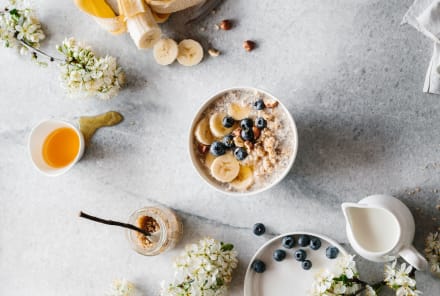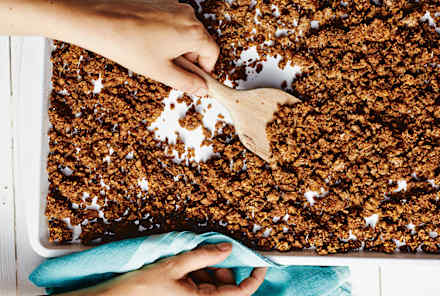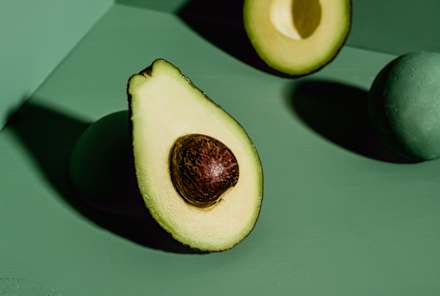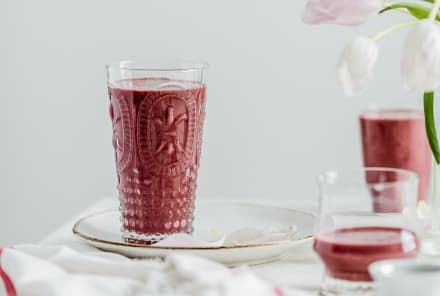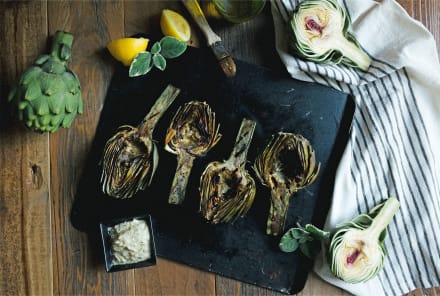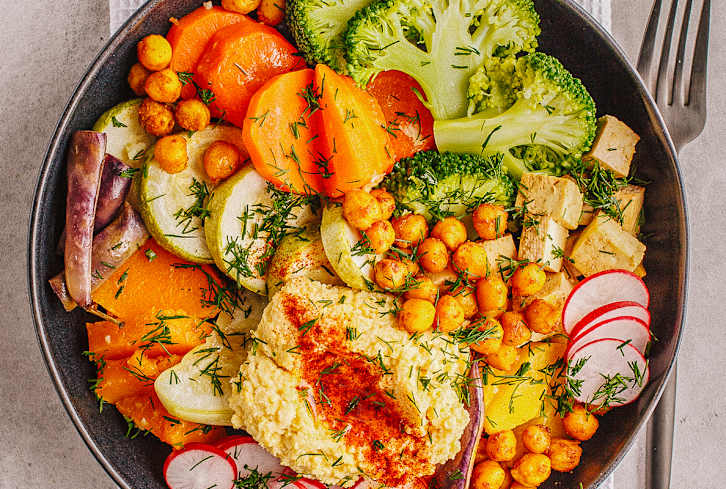Advertisement
What Is Raw Chocolate? An RD Explains How To Use The Varieties


While chocolate may be synonymous with love and romance (not to mention deliciousness), it isn't always thought of as healthy. But, despite its sugary reputation, there are some forms of chocolate that are good for you. You probably know that dark chocolate is better than milk chocolate, but did you know raw chocolate takes the cake when it comes to healthy chocolates? Raw chocolate includes cacao nibs, butter, paste, and powder. Here's everything you need to know about the healthiest way to eat chocolate.
Where does chocolate come from?
Chocolate comes from cacao trees, which grow on farms in tropical areas in West Africa, South and Central America, and Southeast Asia. The cacao bean grows inside a pod on the tree. Each pod contains about 40 beans. Once harvested, cacao beans are fermented under banana leaves and then dried. Then they travel elsewhere to be cleaned, roasted, and turned into the chocolate we buy to eat.
The chocolate bars we buy are made from the meat of the cacao bean, which is referred to as the nib. The nibs are ground into chocolate liquor (the name is misleading; there's no booze here) or liquid chocolate. This is then poured into molds and hardened, resulting in unsweetened chocolate, which is then combined with sugar and sometimes milk and made into the various chocolate products we use, like semisweet and milk chocolate bars.
Benefits of chocolate.
Cocoa (cacao) beans and products made with them are rich in heart-protective flavanols, which have been shown to help lower blood pressure, reducing the risk of stroke and heart disease. Chocolate may also help keep skin hydrated and protect it from the sun1. And chocolate may keep your memory sharp by boosting blood flow to the brain2—definitely great reasons to get a daily dose of chocolate! It also contains the bone-building minerals magnesium, manganese, copper, zinc, and phosphorus.
Semisweet versus bittersweet.
While chocolate definitely has health benefits, keep in mind that an ounce (30 g) of dark chocolate is about 220 calories. The higher the percentage of cocoa in dark chocolate, the less sugar there will be in the chocolate. For example, if the label says 80% cocoa, the remaining 20% will be sugar. So to get the most benefit while still fitting chocolate into your balanced eating plan, look for semisweet or bittersweet chocolate. Both need to contain 35% cocoa solids by law. Semisweet generally has more sugar. They can be used interchangeably in baking and both are referred to as dark chocolate.
Chocolate in the buff.
Of course we all love the creamy, rich, seductive flavor and texture of chocolate bars and truffles, but there's a whole world of benefits waiting for you in the raw components of chocolate.
Nibs
What they are: Roasted cocoa beans are cracked to reveal the "meat" of the bean or the nibs.
Benefits: Nutty and crunchy, unsweetened nibs are an easy and fun way to add the power of cacao to everyday meals. Two tablespoons of cacao nibs contain 114 calories, 5 g of fiber, and 6 g of carbs.
How to use them: Nibs are delicious and nutty and can be sprinkled over yogurt, smoothie bowls or cereal. Nibs can also be used in baked goods, like muffins and cookies.
Cocoa butter
What it is: The pure fat from cocoa beans. While it has a chocolate aroma, it's nearly flavorless.
Benefits: Cocoa butter is what makes chocolate bars rich and velvety. It's a vegan substitute for butter, and unlike coconut oil, it remains solid at room temperature. The fat in cocoa butter is mostly saturated (57 to 64%) and is mostly comprised of stearic acid. Because the jury is still out on how much saturated fat is safe to consume, cocoa butter should be used in moderation, just like butter.
How to use it: Cocoa butter is used to make chocolate and is also used in beauty products. You can buy cocoa butter and use it as a fat source in recipes.
Cacao paste
What it is: The paste is made from grinding up cacao nibs.
Benefits: It's antioxidant-packed, plus it contains the fiber and oil from the bean. Also, since it doesn't contain any sugar, you can use it to make all kinds of unsweetened or lightly sweetened chocolaty treats.
How to use it: You can add it to smoothies or break it into little chunks and use it to top granola. You can also shave it with a cheese plane or a microplane and use it to top coffee and other hot drinks. Also, you can make an antioxidant-packed chocolate bark with the paste by melting it with cocoa butter and adding your own sweetener, as well as health-boosting ingredients like nuts, coconut, and dried fruits.
Cocoa powder
What it is: When cocoa butter is removed from cocoa paste, you're left with cocoa powder.
Benefits: Packed with heart-healthy flavanols, cocoa powder is a great way to add an antioxidant boost without any fat or sugar.
How to use it: Unsweetened cocoa powder can be added to smoothies and baked goods, like banana bread and muffins. You can also use it to make your own homemade hot chocolate mix. I like combining 1 cup of unsweetened cocoa powder with 1 to 1½ cups sugar (depending on how sweet you like it), plus a pinch of sea salt. Mix together and transfer to a lidded jar.

